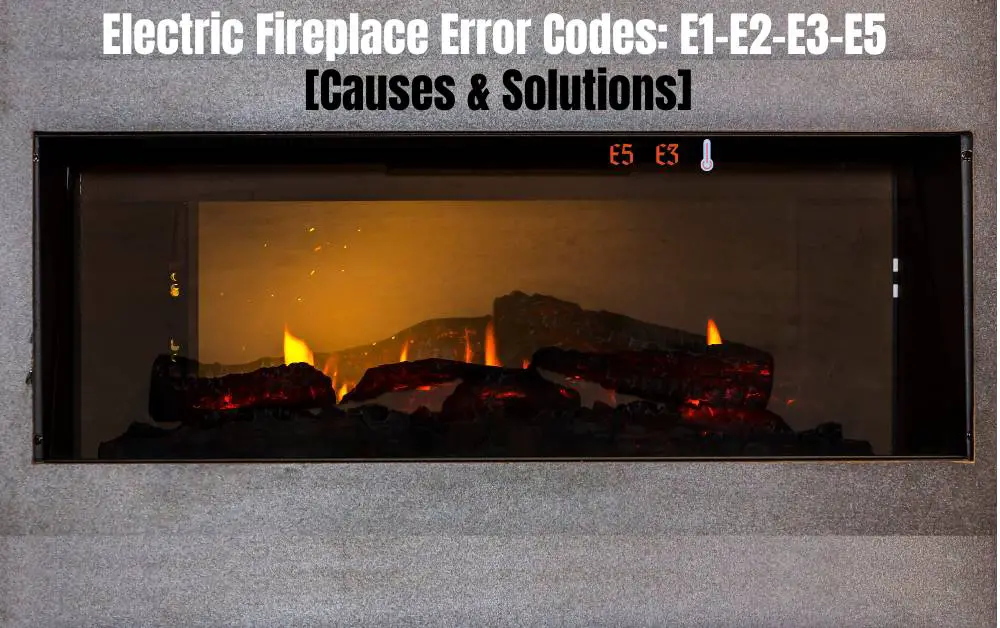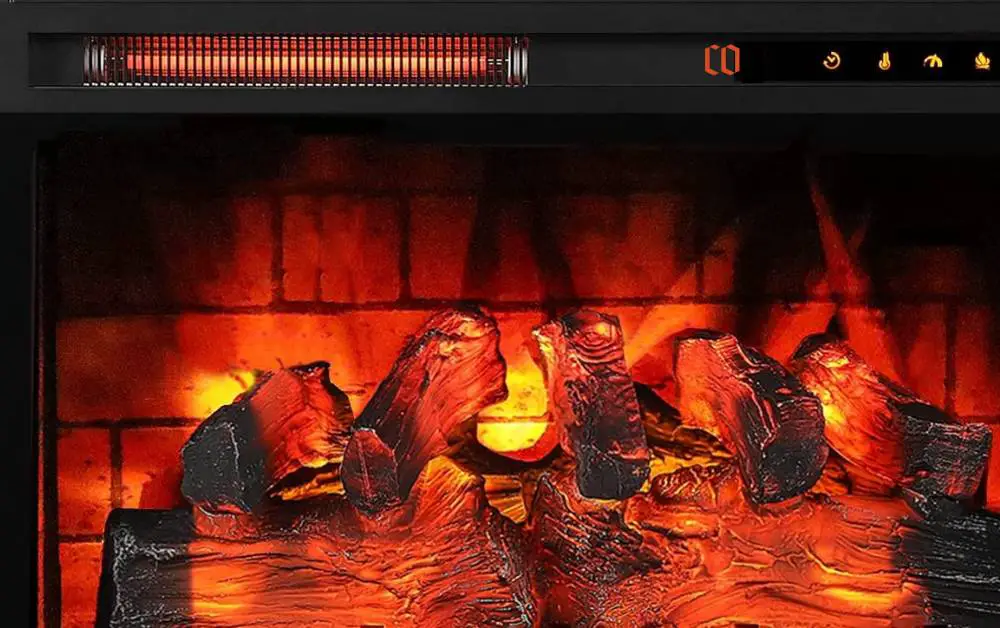Yes, electric fireplaces absolutely give off heat and can effectively warm your living space. These versatile appliances combine realistic flame effects with functional heating capabilities, typically producing between 4,500 to 5,000 BTUs of heat—enough to comfortably warm areas up to 400 square feet. Unlike traditional fireplaces, electric models convert nearly 100% of their energy into heat without losing any through ventilation, making them surprisingly efficient supplemental heating solutions for most homes.
Whether you’re looking to add ambiance to your bedroom or need extra warmth in your living room, electric fireplaces offer both visual appeal and practical heating performance.
Key Takeaways
- Electric fireplaces do produce real heat, typically 4,500-5,000 BTUs, warming spaces up to 400 sq ft
- Two main heating technologies are used: fan-forced heaters and infrared quartz technology
- Electric fireplaces are 100% energy efficient at converting electricity to heat
- They offer zone heating benefits, allowing you to warm specific rooms without heating the entire house
- Most models allow you to operate the flame effects independently of the heating function
- Electric fireplaces are significantly safer than traditional wood or gas alternatives
How Electric Fireplaces Produce Heat
Electric fireplaces generate heat through built-in heating elements that work independently of the flame effects. Let’s break down the two primary heating technologies used in modern electric fireplaces:
Fan-Forced Heating Technology
The most common heating method in electric fireplaces is fan-forced heating. This system works by pulling air over a heated metal coil and then distributing the warmed air into the room using a quiet fan.
How it works:
- Electricity flows through a metal heating element (usually made of nichrome wire)
- The element glows red-hot as it converts electrical energy to thermal energy
- A fan draws cool room air across the hot element
- The warmed air is then circulated back into the room
Fan-forced heaters are known for quickly raising the temperature in smaller spaces. They’re generally more affordable than infrared models but can dry out the air more noticeably. According to the U.S. Department of Energy, fan-forced heaters are among the most common types of electric heating appliances due to their simplicity and effectiveness.
Infrared Quartz Technology
Many premium electric fireplaces utilize infrared quartz heating technology, which warms objects and people directly rather than heating the air.
How it works:
- Infrared quartz tubes are heated by electricity
- The tubes emit infrared light waves
- These waves travel through the air and warm objects they encounter
- The warmed objects then release heat into the surrounding air
Infrared technology offers several advantages:
- Maintains natural humidity levels better than fan-forced systems
- Provides more consistent, comfortable warmth
- Heats objects directly, reducing heat loss to drafts
- Often more energy-efficient for larger spaces
The American Council for an Energy-Efficient Economy notes that infrared heating can be particularly effective for zone heating applications, as it doesn’t lose as much heat to air movement.
Electric Firelace Heat Output and Coverage
Understanding the heating capacity of electric fireplaces is crucial for determining if they’ll meet your needs. Most standard electric fireplaces produce between 4,500 and 5,000 BTUs (British Thermal Units) of heat.
Electric Fireplace Heating Capacity:
| BTU Output | Wattage | Recommended Room Size | Best For |
|---|---|---|---|
| 4,500 BTU | 1,500W | Up to 400 sq ft | Bedrooms, small living rooms, offices |
| 5,000 BTU | 1,500W | Up to 450 sq ft | Medium living rooms, family rooms |
| 5,200+ BTU | 1,500W+ | Up to 500 sq ft | Larger living spaces, open floor plans |
Table: Standard Electric Fireplace Heating Capacities
It’s important to note that while electric fireplaces can effectively warm the spaces listed above, they work best as supplemental heat sources rather than primary heating systems for entire homes. The Energy Information Administration reports that zone heating with electric appliances like fireplaces can reduce overall heating costs by allowing you to lower your central thermostat and heat only the rooms you’re using.
Energy Efficiency of Electric Fireplaces
One of the most significant advantages of electric fireplaces is their impressive energy efficiency. Unlike wood-burning or gas fireplaces that lose heat through ventilation, electric models convert virtually 100% of the electricity they consume into usable heat.
Efficiency Comparison:
| Fireplace Type | Efficiency Rating | Heat Loss |
|---|---|---|
| Electric Fireplace | 99-100% | Minimal (only through unit casing) |
| Gas Fireplace | 70-85% | Significant (through venting) |
| Wood-Burning Fireplace | 10-30% | Massive (through chimney) |
| Pellet Stove | 70-85% | Moderate (through venting) |
Table: Efficiency Comparison of Different Fireplace Types
This near-perfect efficiency means electric fireplaces provide more actual heat per dollar spent on fuel than any other fireplace type. Additionally, because they don’t require venting, all the heat they produce stays in your home rather than being lost up a chimney.
The U.S. Environmental Protection Agency’s Energy Star program notes that while electric resistance heating is generally more expensive per BTU than gas or oil, the zone heating capabilities of electric fireplaces can offset this cost by allowing targeted heating of occupied spaces.
Operating Costs of Electric Fireplaces
Understanding the cost to run an electric fireplace is essential for budgeting purposes. Most electric fireplaces operate on standard 120-volt household circuits and consume about 1,500 watts when the heating function is in use.
Monthly Operating Cost Estimate:
| Usage Pattern | Daily Hours | Monthly kWh | Estimated Monthly Cost* |
|---|---|---|---|
| Light Use | 2 hours | 90 kWh | $10.80 |
| Moderate Use | 4 hours | 180 kWh | $21.60 |
| Heavy Use | 8 hours | 360 kWh | $43.20 |
Based on national average electricity rate of $0.12 per kWh. Your actual costs may vary depending on local electricity rates.
For comparison, the Consumer Energy Center reports that electric fireplaces typically cost less to operate than gas fireplaces when used for zone heating, especially in moderate climates where central heating isn’t needed constantly.
Comparing Electric Fireplaces to Other Heating Options
To understand where electric fireplaces fit in the home heating landscape, it’s helpful to compare them to other popular heating methods:
Heating Method Comparison:
| Feature | Electric Fireplace | Gas Fireplace | Wood Fireplace | Space Heater |
|---|---|---|---|---|
| Heat Output | 4,500-5,000 BTU | 20,000-40,000 BTU | 10,000-40,000 BTU | 3,000-5,000 BTU |
| Efficiency | 99-100% | 70-85% | 10-30% | 95-100% |
| Installation | DIY | Professional | Professional | DIY |
| Venting Required | No | Yes | Yes | No |
| Ambiance | Realistic flames | Realistic flames | Real flames | No flames |
| Operating Cost | Moderate | Low to moderate | Variable | Low to moderate |
| Safety | High | Moderate | Low | Moderate |
Table: Comparison of Electric Fireplaces to Other Heating Options
As this comparison shows, electric fireplaces strike a unique balance between heating performance, safety, and ease of installation that other heating options can’t match. They’re particularly well-suited for homeowners who want both ambiance and supplemental heat without the complexity and cost of traditional fireplaces.
FAQs
Do electric fireplaces really heat a room?
Yes, electric fireplaces produce real heat that can warm rooms up to 400-500 square feet. They typically generate 4,500-5,000 BTUs of heat, which is comparable to many space heaters but with added ambiance.
Can an electric fireplace heat a whole house?
No, electric fireplaces are designed as supplemental heat sources for individual rooms rather than whole-house heating solutions. They work best as part of a zone heating strategy to reduce reliance on central heating systems.
Are electric fireplaces expensive to run?
Electric fireplaces cost approximately $0.15-$0.20 per hour to operate when the heating function is used. Running just the flame effects costs significantly less—typically just pennies per hour.
Affiliate Disclosure: Fireplaceadviser.com is a participant in the Amazon Services LLC Associates Program. We may earn a commission when you click on certain links on this site and purchase.

Hello!! I am Jamal Khan. I often fix my home electric heaters and gas stove problems and research the common issues in the heating units to improve my knowledge and expertise. The aim of establishing fireplaceadviser.com is to share my expertise and knowledge with my audience.












